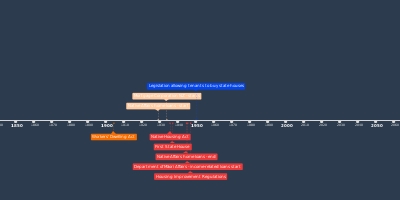29 nov 2004 - Papakura District Council opens development on Hingaia Peninsula
Description:
The green fields with their grazing cows glimpsed before the Southern Motorway snakes north into Manurewa and the city beyond seem to have resisted Auckland's suburban reach.Hingaia Peninsula juts into the Pahurehure Inlet of the Manukau Harbour by the Papakura off-ramp.
Directly north are the waterfront homes of Conifer Grove. To the east, the suburbs of Papakura come to an abrupt halt on the other side of the motorway.
The cows graze on Lees Island, and the stud farms and lifestyle blocks of Karaka lie to the west.
But the tranquillity may not last much longer. Next year diggers could be at work in these fields, building the first stage of a 1700-home subdivision for about 5000 people. In 20 years, more than 13,000 people are expected to live here.
Quentin Ross is looking forward to making a start.
Tall, casually dressed in jeans and patterned shirt, he has rushed from the family roofing business in Takanini to give us a quick tour of the 57ha where his family-owned company is waiting to begin building.
The site, he notes, has got everything going for it. It's north-facing and near the water. It's also worth a small fortune.
Tucked away on this northern end of Hingaia, most homes sit on around 1ha of secluded, landscaped grounds and are worth well over $1 million.
But some residents worry that as the peninsula signs up to more development, these properties could eventually be replaced by the ugly, squashed-up suburbs they have seen springing up around Auckland.
The growing argument over urbanisation at Hingaia mirrors a wider debate over how Auckland's rapidly growing population will live in the next few decades - in traditional housing, which gobbles up the countryside, or on smaller sections to stop this urban sprawl.
Planners at the Auckland Regional Council argue that Auckland cannot carry on as normal.
The region's population is predicted to almost double to 2.3 billion by 2046, and the council predicts Auckland could run out of room for housing in less than 15 years.
To prevent this, it launched a regional growth strategy in 1999, designed to make people in new housing areas such as Hingaia switch to smaller sections and more intensive terraced housing and apartments.
The plan has always been controversial, but it has run into a brick wall of resistance at Hingaia.
When the Papakura District Council promoted the subdivision at a series of workshops in 2000, Hingaia residents made it clear they wanted larger sections, plenty of open space and quality homes.
Resident Terry Harris believes ``90 per cent'' of the small community accepted urbanisation was inevitable but only under certain conditions.
``What we want is a subdivision on Hingaia that will set an example to the rest of New Zealand and be a nice place to live,'' he says.
The council allowed bigger sections to meet residents' concerns but the ARC, which wants smaller sections and a bigger area for intensive housing, has taken the case to the Environment Court.
Ardmore lifestyle block owner Earl White thinks the ARC has got it wrong. He believes Auckland is sprawling because New Zealanders want, if not the traditional quarter- acre, then something like it.
``Intensive housing developments around transport nodes are good in theory but I don't know anyone who wants to live in a seven-storey apartment block in Panmure just because it's near a train,'' he says.
But he concedes that many landowners in Drury and Ardmore are banking on the theory that demand will eventually force the council to allow smaller lot sizes.
``I'd say 30 to 40 per cent of lifestyle blocks have been land-banked by people who want to develop.''
Papakura district councillor Glenn Archibald agrees the biggest development pressure comes on rural land.
But he believes developments at Hingaia and Takanini - where the council is allowing new homes for an extra 20,000 people by 2020 - will hold the line against urban sprawl south ``for a very long time''.
Hingaia locals are not so sure. They believe the Papakura council has made matters worse by allowing urbanisation on about half the peninsula but keeping the rest off limits.
The new city boundary - known as the metropolitan urban limit - runs directly down the middle of Oakland Rd on the north of the peninsula.
Long-time Hingaia resident Malcolm Hood, whose own 1ha property is subdividable under the current plan, says: ``It's absolutely nonsensical that neighbour has been pitted against neighbour, so if you live on one side of the road you can subdivide and if you live on the other there is no subdivision for 50 years.'''
Mr Hood wants to see the metropolitan urban limit include the whole peninsula, around 684ha, instead of the 267ha marked for urbanisation.
Resident Peter Douglas says Hingaia is a chance to avoid the suburban horrors of other parts of Auckland.
But he argues that bringing smaller areas of land into the city limits in a piecemeal approach will mean patchy development, with no guarantee a future council will abide by residents' wishes.
``We think it's crazy. Now we will get a fragmented approach and that's what we were afraid of.''
Source: Urban sprawl: battle lines drawn; More green fields south of Auckland are about to turn into houses - and not everyone is happy about it
by Anne Beston environment reporter
908 words
29 November 2004
New Zealand Herald
NZHLD
Ajouté au bande de temps:
Date:
29 nov 2004
Maintenaint
~ Il y a 20 ans
